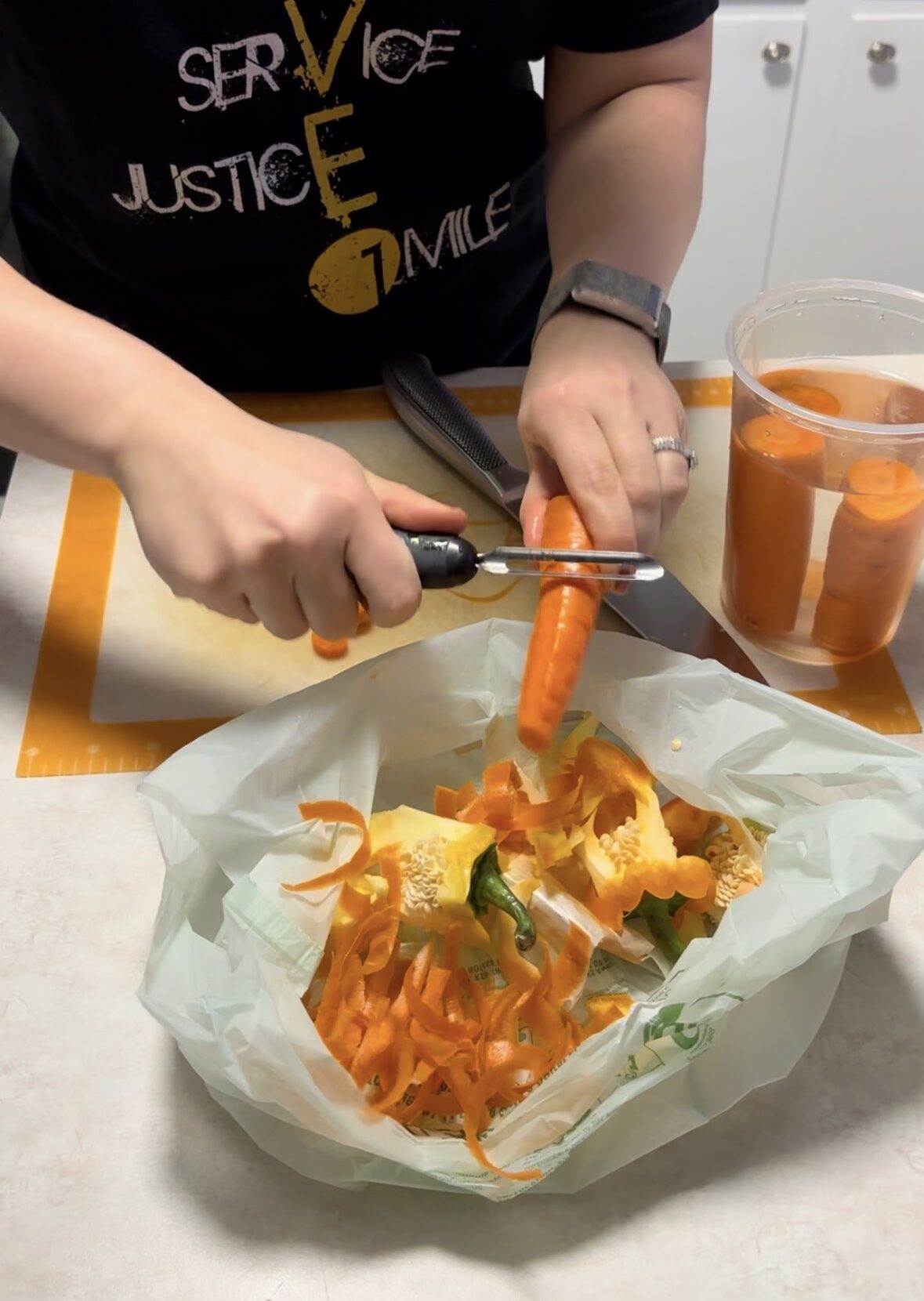Water = Life
Let’s take a moment to think about the most important things in our lives. Does water rise to the top of your list? It didn’t for me, but water scarcity is not a challenge where I live. I know practically that water sustains us, in fact, roughly 60% of our human bodies are made up of water. However, I can’t remember the last time I thought about water because it’s always available when I need it. When I turn on the faucet to brush my teeth in the morning, clean water comes out. If I put water in a pot to steam some vegetables, clean water is a given. When I need a drink of water, all I have to do is turn on the faucet or use the refrigerator.
Many people in the world don’t have the luxury of ignoring where their water comes from and how their water gets to their house. Let’s look at the statistics of a few different countries. The below table shows the percentage of each country’s population that uses a safely managed drinking water service.
| Country | % of Population Using a Safely Managed Drinking Water Service |
| Nepal | 18% |
| Chad | 6% |
| Morocco | 80% |
| United States | 97% |
| Colombia | 73% |
| Mexico | 43% |
Some other mind-blowing statistics if you live an area with plentiful clean water:
- Globally, 2 billion people (~25%) lack access to safe drinking water.
- Globally, 1.4 million people die due to diseases related to water, sanitation and hygiene.
- In developing countries, the average distance women and children spend walking to collect water each day is 4 miles. Below you’ll see a photo of me supporting a few favorite organizations that bring awareness and raise money to support clean water projects globally!
Stewardship Principle #1: Water Conservation
If I do my very best to conserve water living in the Great Lakes region of the United States with abundant clean water available, that isn’t going to change anything for the 94% of Chad’s population who aren’t currently using a safely managed drinking water source. Why is water conservation important then?
When living in areas with plentiful quantities of freshwater, when you conserve water you also conserve energy. Less water coming into your home means less energy inputs to treat and transport the water through the piping system. It also means less energy inputs to heat up the water for your use. Less water coming into your home also means less wastewater going out of your home, which also requires energy to treat before disposal.
While I live in an area with plentiful freshwater sources, there are other areas of the United States that are prone to droughts and future water scarcity concerns. If you live in these areas it’s even more important to conserve water. If the water source (whether groundwater or freshwater) is depleted too quickly and decreases at a faster rate than it can be replenished, eventually that water source won’t be available any longer. An example of this is the freshwater source, Lake Mead, which provides water to Las Vegas. Las Vegas is located in an area prone to droughts where the population, and thus water need, is growing. Two new water intake pipes were installed in Lake Mead recently because of concern regarding the water level. It was dropping so significantly that soon it will be below the current water intake pipe and thus unable to provide water to the city. Las Vegas is a fantastic example of creativity and proactively solving the water challenges for their future city. This includes not allowing grass lawns at residences to watering golf courses with treated wastewater.
The total volume of water on earth doesn’t change. However, the form of water and where it can be found on the earth will change over time. If humans are too disruptive to the natural cycles and take too much water from a specific source without thinking about how that source will be replenished, it could be disastrous. To learn more about the Las Vegas water challenges and solutions (among other countries and cities) I would highly recommend Charles Fishman’s fantastic book, “The Big Thirst”. You will never think about water the same way after reading!
Water Conservation, Step 1: Current Water Usage
We can’t conserve water if we don’t know how much we are currently using in what areas of our life. You can calculate your personal and household current water usage using this water calculator website. Below I’m going to share my personal water usage as well as the US average water usage. I obviously have some work to do!
| Type of Water Usage | Personal Water Use (gal/day) | US Average Personal Water Use (gal/day) |
| Direct (indoor/outdoor at home) | 104 | 117 |
| Virtual (includes driving, shopping, electricity, etc.) | 264 | 605 |
| Virtual (diet) | 939 | 1111 |
Water Conservation, Step 2: Ways to Save Water
If you’ve calculated how much water you’re using in Step 1, you’ve likely already received some tips to conserve water from the water calculator site. I’m also going to share some basic water conservation ideas here.
Direct Water Usage (Indoor and Outdoor at Home)
- I’m sure you’ve heard this one 1,000 times, but don’t let the water run unnecessarily. Turn the water off when you’re brushing your teeth and when you’re washing dishes. And fix your leaky faucets! I’m sure you can come up with other areas where you could turn off the water when not in use.
- If one of your appliances, toilets, or faucets need replacing, choose one that conserves water. For appliances like a dishwasher or clothes washer, choose an Energy Star certified option. This option will conserve water as well as save you money through less energy and water usage. For a toilet or faucet, choose a low-flow version to help conserve water. This is the area I personally could improve upon. While we have an Energy Star certified washer and dryer since we needed to purchase those appliances when we bought our house, we haven’t had the need to replace other appliances, toilets, or faucets. If we lived in a water scarce area, or were more significantly above the average water usage, it might be higher on my list to replace. Right now I’m prioritizing not purchasing new things if they’re not necessary. Since they’re not broken, we aren’t going to replace them right now. When that time comes we will certainly focus on Energy Star and low flow options.
- Use less water or do less activities that consume significant quantities of water. Consider watering your lawn less frequently, washing your clothes less frequently, taking shorter showers, washing your car less frequently, etc. Again, I’m sure you can come up with other areas where you could decrease your water usage by performing specific activities less often.
Virtual Water Usage (Cars, Shopping, Diet, Etc.)
- Avoid single use items. It takes a lot of water (and other resources) to produce any item. However, the resources it takes to produce a reusable item can be outweighed by the number of times you use it. For single-use items, it’s rare for the production resources to be outweighed if we are only using it once and then tossing it. Since we are talking about water, the most obvious example is to avoid plastic water bottles. You could make a one-time investment into a reusable stainless steel bottle like a Hydroflask. Make sure your reusable is always filled with water and take it with you whenever you leave the house. If you must choose single-use items, try to find a way to recycle or reuse it.
- The first point ties in nicely with the second – don’t buy things you don’t need. The key with buying reusables is that it’s a *one-time* investment. You don’t need 17 or 42 reusable water bottles or bags to match your outfit, you need one or two. The same principle applies to clothing, accessories, furniture, coffee mugs, etc. Buying things you don’t need consumes significant resources, one of which is water.
- For the last point regarding diet, which clearly makes up the majority of my and the average American’s daily water use, I’m going to point you to another deeper dive into the impacts of our diets. In short, I think showing water usage in this way is a disservice. Yes, beef and animal products do require significantly larger quantities of water than typical protein sources in a vegan diet. There are other considerations worth accounting for too. Additionally, the type of animal products you purchase matters greatly in terms of the type of water used for production. Organic, pasture-raised (poultry), grass-fed (beef) is the best choice if you want to incorporate the most environmentally responsible animal products.
Stewardship Principle #2: Water Purification
I want to start by recognizing that I live in a place where I don’t have to think about water. It’s always available. If I’m thirsty I can easily find a faucet and drink from it without concern for my health. This section is not to diminish the significant water quality issues that much of the world faces, which are significantly more serious than where I live in the United States. That being said, I still want to speak about water purification. Even though my water meets general water quality standards, there can still be room for further improvement. Part of responsibly stewarding our water resources is understanding the impact of various types of drinking water contaminants and making conscious decisions on the level we are comfortable with.
Let’s think about our water components in two categories – contaminants and minerals. Contaminants are introduced by humans on accident or on purpose. The types of contaminants I’m sharing are more typical of tap water in Western areas of the world. A few examples of common contaminants are nitrates from fertilizer runoff, residual byproducts from disinfectant treatment, various bacteria or parasites, and PFAS materials (or other chemicals) from industrial manufacturing.
Minerals, on the other hand, are naturally occurring elements found in water like magnesium, calcium, and zinc. Water treatment is a good thing. It removes many harmful contaminants from our drinking water. Water treatment can also remove important minerals in our drinking water. If water is “too pure” it can be harmful by depleting your body of critical minerals and potentially leading to mineral deficiencies. This is why it’s important to understand water purity options, even if your tap water is “clean” by federal and global standards.
Water Purification, Step 1: Determine Your Limits
Even within the United States, you’ll see a lot of variation in water quality. It’s important to individualize the health aspect of drinking water. The first step is to determine your current water quality. There are a few different ways you can do this.
- If you have a water utility, you should be permitted access to their water quality test reports. You can call them and request to see their test reports. This will show you what they are testing on a regular basis and what limits they are held to. In addition to this report, you may want to check out EWG or MyTapScore (#2 and #3 below) for further explanation on why certain contaminants can be problematic along with the strictest recommended limits for each contaminant.
- Again, if you have a water utility, another option is to utilize this Environmental Working Group (EWG) resource. You can search for major water utility testing data on their site. This resource has the benefit of also sharing EWG’s assessment of contaminants that are above the federal limit or above their own internal recommended limit and why they may be harmful.
- The last option if you can’t find your water utility on the above resource or if you have well water or spring water, you can look into MyTapScore, which is an independent water testing laboratory. You can order a test kit dependent on the type of water you have and test the water directly from your faucet. Once the test results are in, they will provide a report. This report gives explanations for why certain contaminants can be considered a problem. MyTapScore will even give you personalized recommendations for the type of filter that you should be using to filter out the contaminants detected in your personal water quality test.
- If your primary water source is from a plastic water bottle, we have a lot to unpack. Plastic water bottles are not the most environmentally friendly option. There is also potential of exposure to microplastics. Lastly, various materials can leach out of plastic water bottles and into the drinking water, particularly when the bottles are exposed to heat. If you don’t have a stainless steel reusable option, like a Hydroflask (my personal emotional support water bottle choice), I’d recommend investing in one as it’s beneficial for the environment and our health. Once you have a reusable bottle, you can look at the above three options to determine what harmful contaminants may be in your tap water.
Water Purification, Step 2: Choose a Water Filter
There are multiple water filtration options that span multiple cost ranges. If you’re looking for the most budget friendly option, it might be worth it to spend a small amount of money up front to understand what contaminants you have in your water via MyTapScore in order to purchase the most cost-effective filtration option. If budget isn’t a concern, a whole-house reverse osmosis treatment system is likely going to take care of the most contaminants for only using one system. In addition to reverse osmosis, there is also activated carbon, nano-filtration, and ion exchange options.
After testing our city water and learning about the contaminants in our water that were above the strictest recommended limit, we learned through the MyTapScore website that granular activated carbon filters (which we are already using) eliminate 5/8 contaminants detected whereas reverse osmosis eliminates 7/8 contaminants detected. After doing research into the contaminants, we felt comfortable with continuing to use the activated carbon filters for now.
Typically activated carbon filters, which are the BritaⓇ brand filters, have a lot of plastic encasing the filtration material. While this protects the filter, it seemed like a waste of plastic to us. There are tandem granular activated carbon and ion exchange filter pods with reusable filter housings made by Clear GeniusⓇ that fit standard BritaⓇ and PUR pitchers. We use these to reduce the amount of single use plastic we throw away when we change out the water filter on our pitchers (see photo below!). This is the best mix of health and environmental responsibility for us and our budget right now.
Water Purification, Step 3: Don’t Forget Your Minerals!
If the filtration methods you’re using are depleting your water of minerals, it might be a good idea to look into ways to replenish them. One way to do this is to add a pinch of sea salt to your water occasionally. This could be Celtic sea salt, Redmond salt, etc. – any type of salt that still contains other minerals after production. Another way to do this is to purchase an electrolyte mix that you can add into your water. Personally I love using Redmond Re-Lyte (their Lemon Lime flavor is my favorite!).
I focus on added electrolytes particularly on days where I have a long sweaty workout or days where I’m outside in the sun for a long time. I don’t drink Re-Lyte every day. Usually I drink a half scoop a few times a month to replenish my electrolytes when I need it. However, when we’re on a summer hiking trip expending a lot of energy in the sun I will drink a full scoop each day. My usage is heavily dependent on my diet and activity levels. The surplus or lack of minerals in your water source will also have an effect. Your usage will look different than mine because our circumstances are different!
Stewardship Principle #3: Positively Impact Clean Water on a Global Scale
I threw out some staggering statistics earlier related to clean water access on a global scale. It can be pretty overwhelming to think about and for many of us it’s an automatic call to help. In my high school years I naively thought that “helping” people in other countries with these huge problems was “easy”. If we have the capability in the US why can’t we just transfer it elsewhere? What I’ve learned since 2013 has shown me that the “easy” solutions dreamt up by many people in the US often are the biggest failures.
Ultimately the best way that you as an individual can help globally with clean water access is to get involved with an organization that’s already doing the work in a responsible manner. A great organization in the Cleveland area that’s doing the work in Uganda is Drink Local Drink Tap. These guidelines are only scratching the surface. However, when you’re looking for an organization to donate to or join, here are some guidelines:
- Does the organization recognize that one template method cannot be applied across the board? Do they adjust their plans and designs based on the individual needs of the community they are partnering with?
- Does the organization act as a PARTNER (on the same level as the community) rather than a hierarchical structure?
- Does the organization spend significant time talking about maintaining the system? Do they provide training for the community members? Does the community own the system and upkeep once it’s complete?
I would encourage you to do your research on organizations prior to jumping in head first. We often have amazing opportunities to give our money and time to help others. It’s important that we are giving our money and time to the right organizations who are looking at the long-term sustainability of their project work rather than the immediate impact.
Responsible Water Choices Are Individually Different
Water is the source of all life. It’s a natural resource that we must take care of for future generations. Conserving water and purifying water to optimize our health are both things that have an immediate impact on the water nearest to our home. Let me know in the comments below if you’ve identified a new water conservation or purification tactic to implement in your house!
While these two items are great and have immediate impacts nearest to us, it’s natural to want to help others globally who are in a worse situation. I know it is with the best of intentions that we want to make a global impact. But sometimes good intentions don’t always translate to good actions. If you are interested in clean water organizations implementing sustainable solutions globally, I encourage you to look into Engineers without Borders and Drink Local Drink Tap. You can also use the guidelines listed under Principle #3 above to vet the organizations nearest you.
SOURCES:
- https://www.usgs.gov/special-topics/water-science-school/science/water-you-water-and-human-body#:~:text=Up%20to%2060%25%20of%20the,bones%20are%20watery%3A%2031%25.
- https://www.sdg6data.org/en/
- https://www.watercalculator.org/wfc2/q/household/; https://www.activesustainability.com/sustainable-life/calculate-water-footprint/?_adin=02021864894
- https://www.ewg.org/tapwater/?gclid=Cj0KCQjwuLShBhC_ARIsAFod4fJr19TZEwr727aRBJrgIi35rZX3jbTRMWAHBJirnggSEVo4UmV2WkIaAiYDEALw_wcB
- https://drinklocaldrinktap.org/
- MyTapScore: https://mytapscore.com/
- The Big Thirst, Charles Fishman
- https://www.healthbasics.net/blog/refined-versus-unrefined-salt-whats-the-difference/









